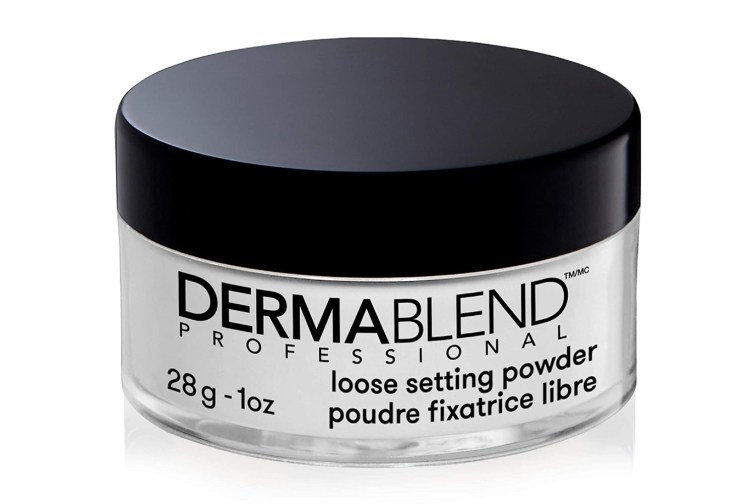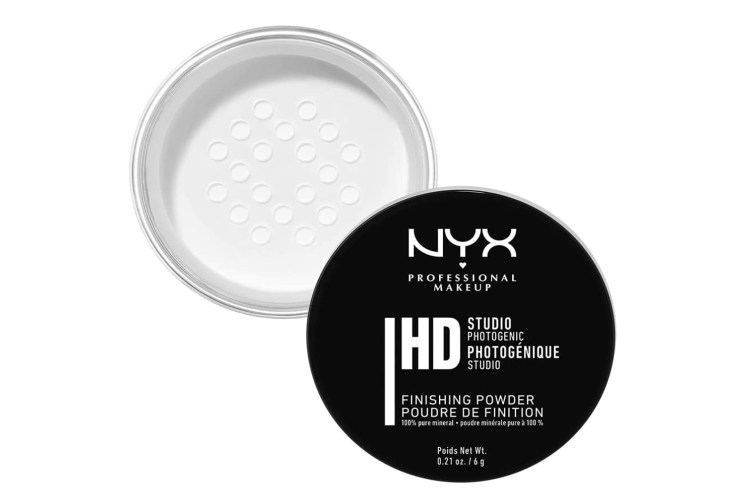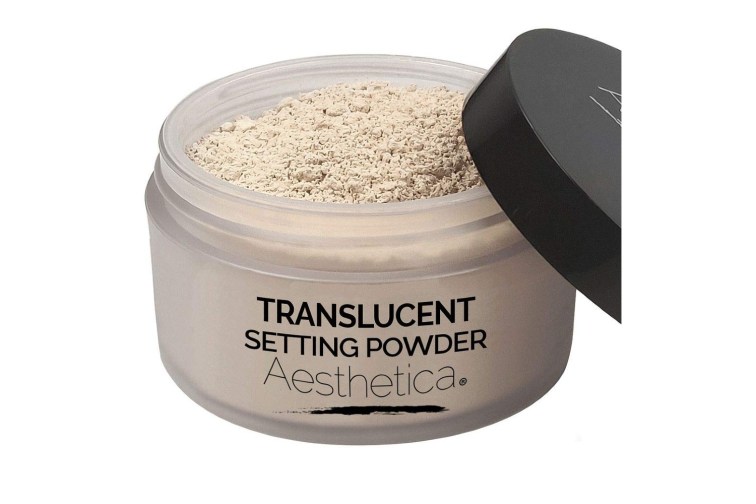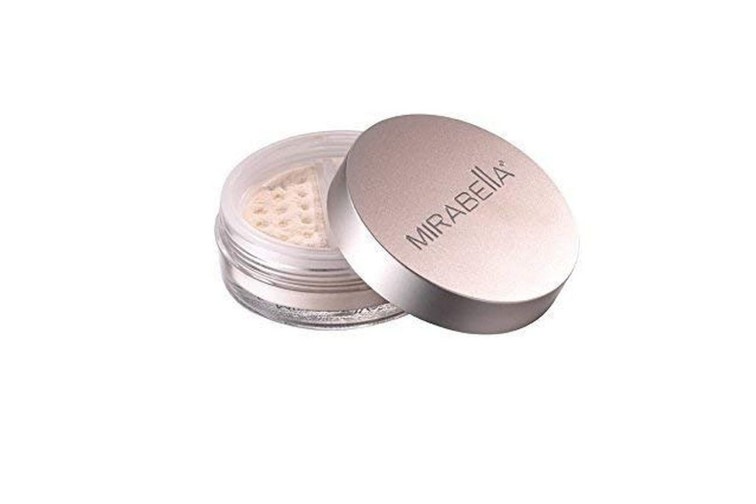If you purchase an independently reviewed product or service through a link on our website, we may receive an affiliate commission. Learn more about our policies and reviews.
Finishing powder is the one product your makeup bag is missing if you don’t already have it. The powder is usually loose but can be pressed, and it has a variety of benefits. Sometimes called setting powder, the product keeps your makeup in place all day long while combatting shine and oil.
The powder is applied on top of your liquid makeup such as concealer and foundation to set it in place and make it last all day. The powder keeps your makeup looking fresh while keeping everything in place, plus it gives your face a glowy, fresh look.
Not only does it set your makeup, but it also gives you a filter effect as if your face was just airbrushed, plus it soaks up oil and grease on your face – what more could you ask for?
The powder is super lightweight, doesn’t feel heavy, and brightens your under eyes and entire face, plus it leaves you with either a matte or dewy finish depending on which powder you choose. We rounded up all of our favorite filter effect finishing powders in 2024 and you can see all of our top picks below!
Our Favorite Filter Effect Finishing Powder Worth Considering in 2024
Dermablend Loose Setting Powder — Best Overall
Perfect for setting your makeup, concealer, or foundation, this fragrance & oil-free translucent powder keeps your makeup in place for up to 16 hours and is safe for all skin types. Even better, it comes with an applicator puff that easily allows you to reapply powder to oily skin throughout the day.
Pros
- It comes with an applicator
Cons
- It goes on white but dries clear
NYX PROFESSIONAL MAKEUP Studio Finishing Powder — Runner Up
This translucent setting powder comes in one universal sheer shade that works on all skin types and tones to set your makeup flawlessly. It’s made of 100% pure mineral silica and is super fine, making it lightweight and easy to blend. The best part about this powder is that it is 100% cruelty-free and has never been tested on animals.
Pros
- It is 100% cruelty-free
Cons
- It doesn’t come with a puff applicator
Aesthetica Translucent Setting Powder — Honorable Mention
This lightweight setting powder is vegan, cruelty-free, and gluten-free, plus, it comes with a velour powder puff applicator that makes it easy to set your makeup. It’s super lightweight so it keeps your makeup in place without causing it to clump or dry out, plus, it is sheer so it matches any skin tone.
Pros
- It comes with a velour powder puff applicator
Cons
- The powder is yellow but dries clear
WUNDER2 PERFECT SELFIE HD Photo Finishing Powder — Most Convenient
Perfect for all skin types, this pressed powder comes in one universal shade that’s completely sheer, so it works well on any skin tone or type. The powder mattifies your skin and absorbs excess oil while keeping your makeup in place. Even better, it’s paraben-free and oil-free, but it does not come with an applicator.
Pros
- It’s paraben-free and oil-free
Cons
- The powder is pressed, not loose
Mirabella Perfecting Loose Finishing Powder — Also Consider
Formulated with Vitamin E, Vitamin C, and tetra-peptide 3, this setting powder combats oil and shine while keeping your liquid makeup in place. Not only does it work with all skin tones and types, but it’s also formulated without parabens, talc, synthetic fragrances/dyes, or gluten, so you can feel good about putting the powder on your face.
Pros
- It is paraben, talc, synthetic fragrances/dyes, & gluten-free
Cons
- It doesn’t come with a brush
Buying Guide for Finding Filter Effect Finishing Powders
Finishing powder is the last step in completing a good makeup look. This guide will cover the basics you need to know before you make a purchase.
The Purpose of Finishing Powder
Finishing powder, as the name suggests, is a type of powder that’s used over other makeup products at the end of your routine. Its goal is to keep all that makeup you just put on in its place. However, the question is - why do you need it? Is it even important?
To answer that question, it’s important to understand the “lifespan” of makeup on your face. In a vacuum, makeup can technically last forever, but unless you’re standing still in an empty room all day, that makeup will fade away for a variety of reasons.
The most common offender is body fluid. There are two types of body fluids that are produced on your face at all times - sweat and oil. While their composition is slightly different, and some may sweat more while others get oily faces more easily, the result is the same - the body fluids will end up ruining your makeup if not dealt with.
Furthermore, that’s not the only thing that makes makeup fade - you also have to consider environmental factors. Where you are and what you’re doing severely affects how well your makeup holds up. If you’re moving a lot and are in a windy area, for example, all that movement will cause bits of that powder on your face to fade away, albeit gradually.
Because of these various factors, finishing powder ends up being far more important than you think. You won’t be able to keep makeup on for more than half a day without seeing signs of fading or damage - unless, of course, you use finishing powder.
What’s the Difference Between Setting Powder and Finishing Powder?
Because the two powders are used for similar reasons, some people get confused about which powder does what. In reality, setting powder and finishing powder have completely different purposes, though they both serve as a “secondary” makeup product of sorts, not contributing directly to your final look but rather keeping it in place.
Setting powder is the type of powder that you use to hold the rest of your makeup on your skin. As mentioned earlier, skin can get pretty oily and sweaty over the course of a day, and foundation alone isn’t enough to stop that. Setting powder’s anti-oil properties allow you to keep that oil at bay, resulting in longer-lasting makeup. Setting powder is usually applied first.
If a setting powder is used at the beginning of the routine, then finishing powder is used to wrap things up. It’s applied once everything else is done - once you’ve bronzed, highlighted, contoured, blended, and so on. Finishing powder is like adding sprinkles on top of a cupcake, or grating cheese above a bowl of spaghetti (not the best analogy, but you get the picture).
How to Use Finishing Powder
Step 1: Apply all other makeup first
Of course, since finishing powder is generally the last step of most makeup routines, you’ll have to do everything else first. That means putting on the setting powder, then the foundation, then everything else that you want to add.
Step 2: Add the finishing powder
Once you’ve got everything set up, you can begin with the finishing touches. Apply finishing powder onto your face with your favorite brush or sponge. The key is to evenly apply it on your face without damaging the makeup you’ve already applied. This means you need to put only a certain amount of pressure when applying the powder.
This can be tricky to pull off, but once you’ve got the hang of it, it’s quite easy. Be sure to cover as much of your face as possible, as finishing powder does change the look of your face by a bit. You can notice which parts aren’t covered by finishing powder if you look closely enough, so try to avoid that whenever possible.
Step 3: Let it settle
Just as you should wait for foundation powder to settle on your face before applying other powders, you should also wait a bit after applying the finishing powder. The powder needs a bit of time to settle in place. Once you’re done with that, you can do the rest of your prep before heading out.
Is Finishing Powder Necessary?
Despite providing substantial benefits to your makeup and face as a whole, finishing powder isn’t used by a lot of people. This is in part due to the fact that not everybody knows it exists, and those that do know about it don’t always see it as a requirement for every makeup routine. At the end of the day, it’s up to you to decide, but you’re missing out on a well-rounded routine if you skip it.




